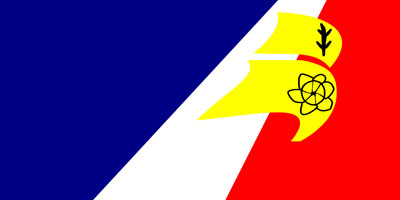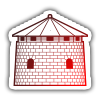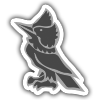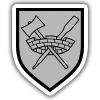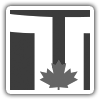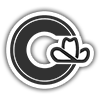Newfoundland & Labrador, Canada
Flag
The flag of Newfoundland and Labrador was adopted by the provincial legislature in 1980 and its design is based on the Royal Union Flag. The colours symbolize snow and ice (white) the sea (blue) human effort (red) and confidence in the future (gold). The two red triangles represent the mainland and island parts of the province, the golden arrow represents hope for the future and the trident formed by the triangles in the hoist half of the flag refers to the provinces dependence on fishing and the sea.
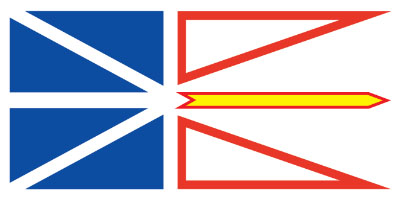
Other Provincial Symbols
- Floral Emblem: Pitcher Plant
- Tartan: The Provincial Tartan
- Tree: Black Spruce
- Bird: Atlantic Puffin
- Animal: Newfoundland Dog
- Game Bird: "Partridge" (Ptarmigan)
- Animal: Newfoundland Pony
- Gemstone: Labradorite
Coat of Arms
Newfoundland and Labrador's coat of arms, one of the oldest of any province or territory, was granted by King Charles I in 1637.
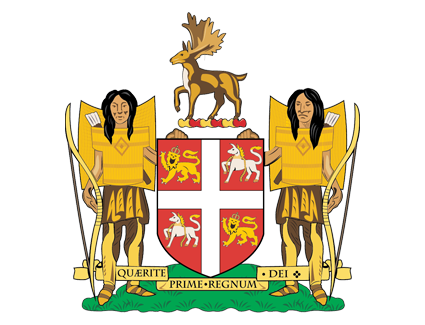
In commemoration of Cabot's discovery of the island on the feast of St. John, the shield is divided into four parts by a silver cross similar to the cross on the Arms of the Knights of St. John. Two of the four quarters display lions and two display unicorns. These represent the supporters of the Royal Arms after the union of England and Scotland.
Two Aboriginal men in warlike clothing, representing the island's original inhabitants, support the shield. The elk in the crest above the shield is included as an example of the fauna of Newfoundland and Labrador. However, the elk has never been native to the province; it is possible that the animal was meant to be a caribou.

Origin of the Name
King Henry VII of England referred to the land discovered by John Cabot in 1497 as the "New Found Launde".

History
The Aboriginal inhabitants of Newfoundland and Labrador were the Beothuk. Archaeological evidence suggests that the Beothuk inhabited Newfoundland long before European colonization and that they may have been descended from earlier people who occupied the island for several thousand years.
At the time of European contact, the Beothuk occupied at least the south and northeast coasts of Newfoundland, numbering perhaps no more than 500 to 1,000 people. By the early 1800s, disease and conflicts with settlers and others frequenting the island led to their extinction. There were, and still are, a relatively large number of Inuit concentrated in the coastal communities of Northern Labrador.
The first Europeans to visit Newfoundland were Norsemen who are thought to have arrived in the 10th century. Other early visitors - the Basques, Portuguese, Spanish, British and French - staged fishing expeditions in the 16th century and possibly earlier.
The Genoese navigator Giovanni Caboto, known as John Cabot, landed on the island on June 24, 1497, on the feast of St. John the Baptist. Cabot called the new land "St. John's Isle" in honour of the saint. In 1583, Sir Humphrey Gilbert reasserted England's claim to the Island of Newfoundland and the surrounding seas for Queen Elizabeth I.
In 1610, a group of merchants under King James I tried to establish a permanent settlement at what is now Cupids on Conception Bay. This was the first recorded attempt to establish a formal English colony in present-day Canada.
Anglo-French colonial warfare shaped the history of the province during the 17th and 18th centuries. France, already well established on the mainland of Eastern Canada, began to make claims to parts of Newfoundland. In 1662, France established a fort and colony at Placentia, despite protests from British merchants and fishermen. The Treaty of Utrecht in 1713 ended a long period of raids and skirmishes by both nations, and reconfirmed British sovereignty over Newfoundland and the fishing banks.
The Seven Years War (1756–63) saw a resumption in hostilities between England and France. However, with the signing of the Treaty of Paris in 1763, British sovereignty was again recognized.
In 1832, the people of Newfoundland were granted the right to vote for an elected assembly. However, conflict between the assembly and the appointed council led to the collapse of the colonial government by 1841. In 1847, the British government decided to revert to a separate assembly and council, although the council was not made responsible to the assembly for its actions. After much debate, Newfoundland was finally given responsible government in 1855.
Newfoundland sent observers to the Confederation Conference in Québec City in 1864, but postponed its decision on whether or not to join the union. Confederation became the major issue in the general election in Newfoundland in 1869, but the concept did not gain popular approval.
By 1933, the Great Depression, combined with other factors, brought the Newfoundland government close to bankruptcy. Newfoundland, a Dominion within the Commonwealth, asked the British government to suspend the legislature. A governor and a six-member Commission of Government ruled Newfoundland from 1934 until 1949.
After World War II, the question of Newfoundland's future status became an issue once again. In 1948, it was decided to hold a public referendum on two options: retention of the Commission of Government or a return to the 1934 status as a Dominion within the Commonwealth. However, a vigorous popular movement forced British authorities to include a third referendum option: union with Canada. Following two referenda, confederation with Canada won with 52 percent of the vote. On March 31, 1949, Newfoundland became the tenth province of Canada. In December 2001, the province of Newfoundland became officially the province of Newfoundland and Labrador following the adoption of an amendment to the Constitution of Canada.
Labrador Flag
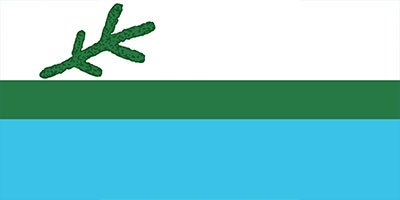
Labrador Coat of Arms
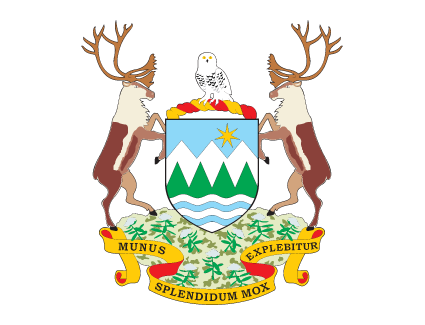
Civic Flags
St John's, Newfoundland & Labrador
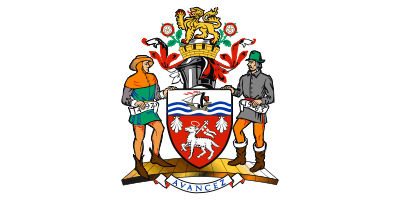

Franco-Newfoundland & Labrador Flag
